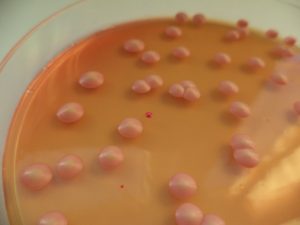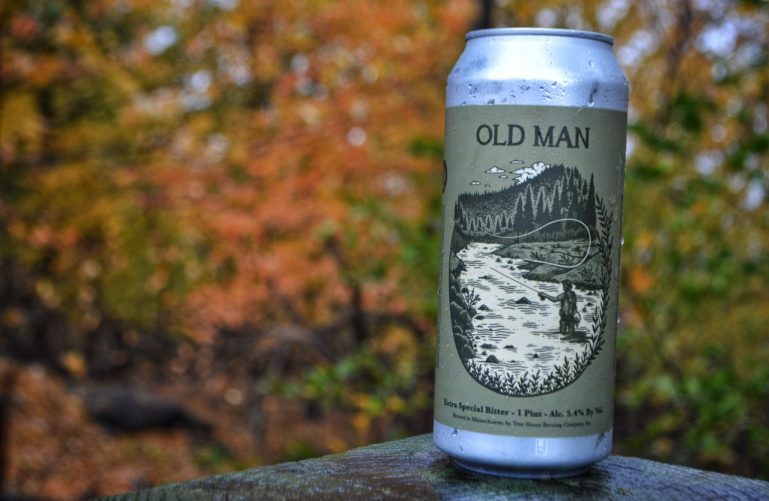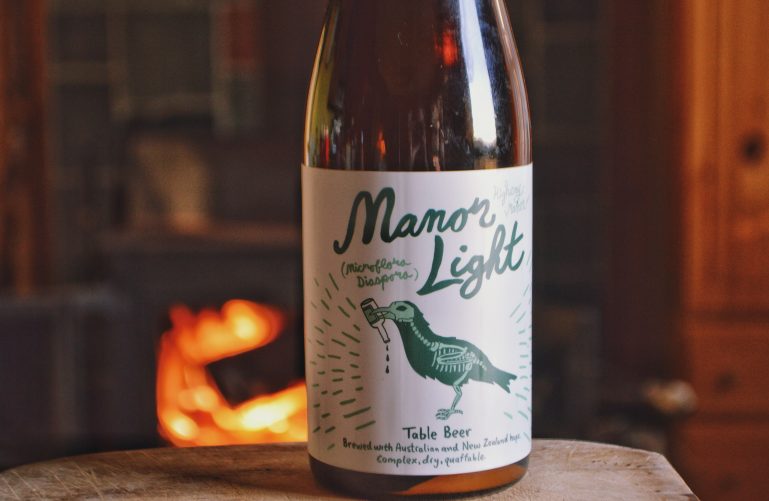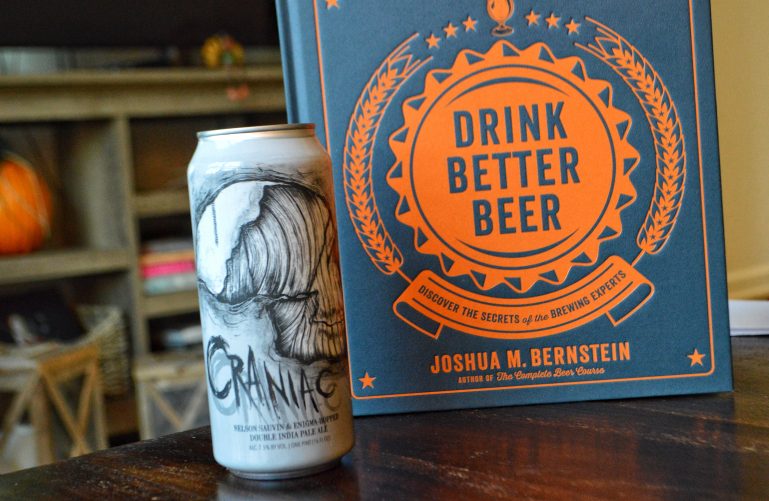Wild Yeast And Your Beer

Close your eyes and imagine a scene. It’s a late afternoon in June. The temperature is hovering around 75 and it’s a pleasant dry heat. You’re relaxing on a lounge chair in a screened-in gazebo with a ceiling fan lazily circulating the air around you. The smell of freshly cut grass, lilacs and tilled soil fill the air. A horse whinnies in the distance while birds twitter and cicadas buzz. Taking in this idyllic scene, you reach over and grab your drink from the side table. Question: What are you drinking?
Hopefully you said beer. After all, you’re on a blog that talks about beer, so it’s the obvious choice. What type of beer though? I’ve written about the seasonality of beer in the past and summer months are definitely the ones where people change their drinking habits the most. Perhaps you thought of a nice salty and fruity gose. Or a cold and crisp pilsner. Or maybe you’re the type of person who likes to watch the world burn and has absolutely no time for this seasonal crap so you’re drinking a barrel-aged stout. Regardless, when I’m in that situation, or when I want to pretend I am during the colder months, I always think of a Brett IPA. The love child of citrusy IPAs and wild ales, Brett IPAs are the perfect embodiment of a summer day in the country.
Brettanomyces: Wild Yeast, Funky Flavors

Brettanomyces, or Brett for short, is a yeast and without yeast, fermentation can’t happen. Yeast acts as Beera Claus because it eats up the sugary treats in the wort (water, hop and grain mixture that serves as the basis for beer) and leaves behind one of the best presents people can ask for: alcohol. The vast majority of beers use yeast from the Saccharomyces family, because their byproducts are much more palatable and complimentary to the various beer styles. Imagine Saccharomyces as your well-adjusted aunt and uncle with well-mannered kids, cute dog, and matching outfits. Brett, on the other hand, is your uncle that lives in the woods, doesn’t really bathe, and tends to overstay his welcome. He can be a hell of a fun guy though (pun absolutely intended).
Brett’s volatile nature and love of wooden vessels like tanks and barrels make it most brewer’s nightmare. When an ingredient can create aroma and flavor that is likened to a wet horse, cheese or mouse urine, it’s probably best to remove it completely from the equation. However, if Brett’s funkiness is held in check, it offers a wonderful burst of unique and delicate flavor; almost like the scene I asked you to imagine in the first paragraph. Despite the potential for disaster, Brett has found a home in a number of different beer styles such as lambics, guezes, and some saisons or farmhouse ales.

Using Brettanomyces in IPAs
How do IPAs fit into this picture? To be honest, not all of them do. IPAs with a pinier and more resinous flavor (Think Sierra Nevada Torpedo, Sixpoint Resin, New Belgium Ranger or Stone Ruination) would gain nothing from the addition of Brett. Those with more citrus and fruity notes (Singlecut Softly Spoken Magic Spells, Ballast Point Sculpin, Toppling Goliath PsuedoSue or any of the “New England” IPAs) on the other hand can definitely benefit from the addition of Brett. As beer ferments, there’s a chemical reaction between the different acids present in the wort and the alcohol being produced by the yeast. This interaction creates esters which give beers a fruitier aroma and test. Combine those esters with the fruity characteristics of some hops and you have an explosion of fruit flavor where you would never expect it to be. The drawback to this process, at least to some, is that Brett will definitely add some of its barnyard flavor.
While doing research about Brett IPAs, I ran across an article entitled “What is Brett IPA Supposed to Taste Like” by Derek Dillinger on his Bear-Flavored Blog. Derek is really into fermentation, so much so that he ate nothing but fermented food for a year and wrote a book entitled The Fermented Man. He also spent time as one of the brewers at Kent Falls Brewing in Kent, CT which prides itself as a farmhouse brewery (one that harvests a large percentage of their ingredients themselves). In between talking about the impact Brett can have on fermentation, he describes his ideal Brett IPA and really hits the nail on the head for me: “I’ve been working on a Brett IPA recipe for years as my perfect hiking beer, because that’s what I want on top of a mountain. Refreshing, but a little wild, a little disorienting. Not cloying or clobbering or overely severe. I want a beer that tastes like a glass of juice from an unknown alien species of fruit.” Alien Fruit Juice. How’s that for the name of a beer? And for me, that’s the brilliance of Brett IPAs. Toned down bitterness, a thicker mouthfeel, refreshing and a wild mix of fruity flavors that reminds you of an idyllic summer day in a field.
I should admit, however, that I do have another reason for really digging Brett IPAs: certain fruits make me sweat. Yeah, it’s not the end of the world, but it’s uncomfortable and annoying. Oranges, pineapple and other acidic fruits tend to hit me the worst. If I have a bite, the right half of my body starts to sweat. Kinda weird, but I’ve learned to live with it. Sadly though, it keeps me from enjoying sours, lambics and their relatives without having some discomfort. Here’s the rub though, I love all of these things. Pineapples rock my world, and I’ll power my way through the latest Grimm sour release because it’s so damn delicious and I just can’t help myself. Half of my hair will be drenched with sweat and I’ll be sitting there with a stupid grin on my face. Citrusy IPAs, on the other hand, don’t illicit this reaction. I can drink beers with notes of grapefruit, pineapple and orange as long as that flavor comes solely from the hops and not any additives (Pineapple Sculpin I’m looking in your direction) and savor every drop without having to wipe my brow. Brett IPAs kick that juiciness up another notch and that couldn’t make me happier.

Admittedly, Brett IPAs can be a bit more difficult to find out in the wild. Their unpredictable nature and the threat of Brett infecting other beers contribute to their scarcity as well as their higher price tag. Two of the more easily accessible releases are Crooked Stave’s Hop Savant and Stone Brewing’s “Enjoy After. . .” series. If you decide to pick up an “Enjoy After. . .” please keep two things in mind. First, it’s not actually fermented with Brett; the IPA is spiked with Brett after it’s been bottled. Second, you’re going to have to wait awhile to try it. The current release isn’t meant to be opened until after April 20th, 2017. You might be able to find an older bottle, but unless you’re confident that your beer store properly stores their beer, I’d stay away. Don’t fret, though, many breweries are making one-off batches of Brett IPAs, so if you keep your ear to the ground, you’re sure to find one.



1 Comment